
This week’s Summer Bloggin’ post comes from Carley Biblin. On her blog Making It Up as I Sew Along she blogs about all things stitching related. She shares tutorials, tips, reviews, and other fun stuff, so do pop over and check it out when you get a chance. Today Carley is sharing a bit about her favorite method of embroidery which we thought was really cool. We'll let Carley explain what it's all about.
Thank you, Carley!
I came up with this method of embroidery a couple years ago when I was desperately trying to figure out the perfect wedding gift for my younger sister. I discovered Osnaburg fabric in the utility section of the fabric store and used it to make yarn-embroidered starfish patches which I then appliqued onto pillow covers I made from cotton sateen.
The dimension and softness of the bulky yarn creates such a textural effect. With the Osnaburg you can use yarn in much the same way as embroidery floss, though it may need a bit more special handling. In the tutorial below I show how to make a strawberry patch, but you can make many other shapes. So read on and let your creativity grow.
Materials:
- Osnaburg (utility fabric)
- Bulky weight yarn
- Large tapestry needle
- Embroidery hoop
- Image or embroidery design
- Pen/pencil/chalk
- Sewing needle and thread
1. Gather your yarn and other materials. I prefer the look and feel of wool or wool blend yarn, but any bulky yarn will work. Use a tapestry needle with the largest eye you can find.
2. Hoop the osnaburg fabric. Use a hoop at least as large as the patch you will be making. Then sketch your chosen design directly onto the fabric. I like to use a sharpie marker because it shows clearly. Feel free to use almost anything since it won't show in the final project.
3. Thread a length of yarn about 18" long into the eye of the tapestry needle. The best way I've found is to tightly twist the end of the yarn and then shove it through with my thumbnail. Knot the other end of the yarn.
4. Select a fill stitch to use, something that will fill all the space without leaving gaps. I used brick stitch (also known as long and short stitch).
The goal is to cover the base material completely. Begin embroidering as you would a regular embroidery piece. Use the weave of the fabric as a guideline for stitch placement.
Although the Osnaburg appears to have very small spaces between the threads of the fabric, the threads move apart to let the yarn pass through easily.
With fluffier yarn, you may need to put more space between each stitch, so experiment a bit to find what works for your particular yarn. When you finish a length of yarn, knot it at the back, cut, and start a new length as before.
5. When the design is completely filled in, add any outlining or other finishing touches. For my strawberry design, I used some scattered seed stitches and some three dimensional weaving for the leaves and stem. This step is all about adding depth, texture, and interest, so have fun with it.
6. Remove the fabric from the hoop. Cut out the embroidered design at least 1/2" from the edge of the yarn.
7. Thread your sewing needle and knot the end of the thread. Fold the osnaburg fabric to the back of the patch and begin stitching it in place. To do this, bring the needle to the front between two of the yarn stitches and back down without crossing over a stitch. The thread should disappear beneath the yarn. Continue all around the patch, making sure that none of the osnaburg is visible from the front.
8. Your patch is now finished and ready to be used. You can stitch it onto a pillow cover, bag, or jacket or use it in any way you prefer.
I hope you've enjoyed learning this new technique. If you make something, I'd love it if you would tag me on Instagram (@carleybiblin) or send me an email (cbiblin@gmail.com). I look forward to seeing what you make.
Happy Stitching!
And we would of course love to see it too if you make something with Carley's tutorial. Please share in the &Stitches Flickr group.

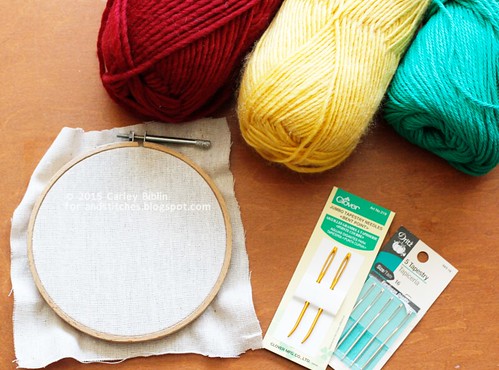
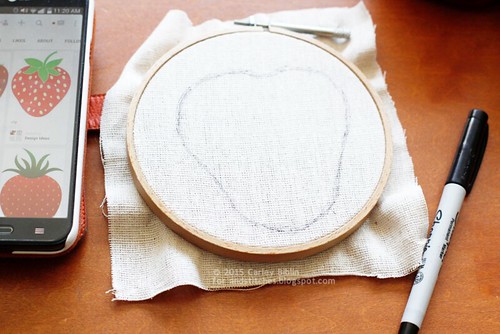


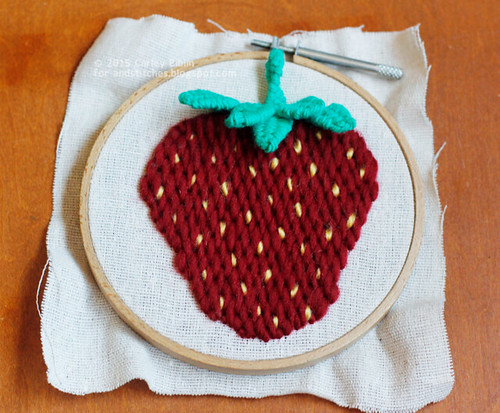
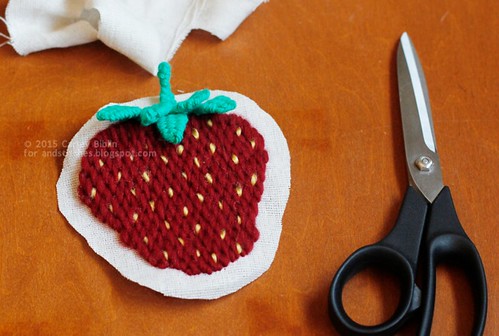
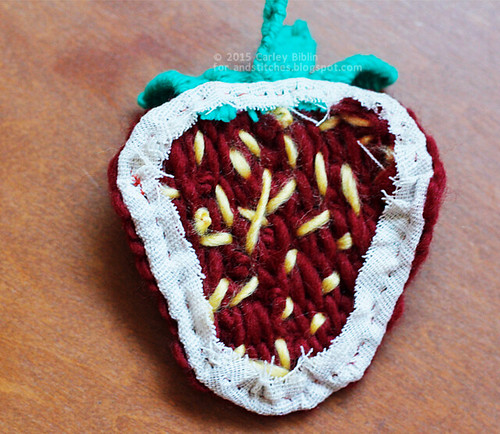
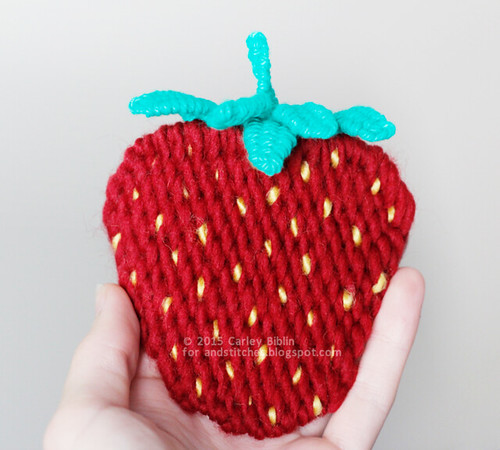
Love this! It looks really cool :)
ReplyDelete